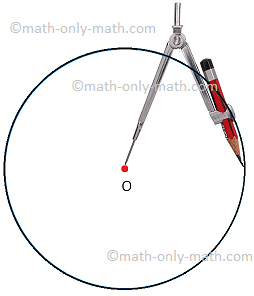Compound Interest with Periodic Deductions
We will learn how to calculate the compound interest with periodic deductions or additions to the amount.
Solved examples on compound interest with periodic deductions:
1. Ron borrows $ 10,000 at a compound interest rate of 8% per annum. If he repays $ 2000 at the end of each year, find the sum outstanding at the end of the third year.
Solution:
For the first year:
Principal = $ 10,000
Rate = 8 %
Time = 1 year
Therefore, interest = $\(\frac{P × R × T}{100}\)
= $\(\frac{10000 × 8 × 1}{100}\)
= $\(\frac{80000}{100}\)
= $ 800
Therefore, the amount of loan after 1 year = Principal + Interest
= $ 10,000 + $ 800
= $ 10,800
Ron pays back $ 2,000 at the end of the first year.
So, the new principal at the beginning of the second year = $ 10,800 - $ 2,000 = $ 8,800
Therefore, for the second year:
Principal = $ 8,800
Rate = 8 %
Time = 1 year
Therefore, interest = $\(\frac{P × R × T}{100}\)
= $\(\frac{8,800 × 8 × 1}{100}\)
= $\(\frac{70400}{100}\)
= $ 704
Therefore, the amount of loan after 2 year = Principal + Interest
= $ 8,800 + $ 704
= $ 9504
Ron pays back $ 2,000 at the end of the second year.
So, the new principal at the beginning of the third year = $ 9504 - $ 2,000
= $ 7504
Therefore, for the third year:
Principal = $ 7504
Rate = 8 %
Time = 1 year
Therefore, interest = $\(\frac{P × R × T}{100}\)
= $\(\frac{7504 × 8 × 1}{100}\)
= $\(\frac{60032}{100}\)
= $ 600.32
Therefore, the amount of loan (outstanding sum) after 3 year = Principal + Interest
= $ 7504 + $ 600.32
= $ 8104.32
2. Davis invests $ 20,000 at the beginning of every year in a bank and earns 10 % annual interest, compounded at the end of the year. What will be his balance in the bank at the end of three years.
Solution:
For the first year:
Principal = $ 20,000
Rate = 10 %
Time = 1 year
Therefore, interest = $\(\frac{P × R × T}{100}\)
= $\(\frac{20000 × 10 × 1}{100}\)
= $\(\frac{200000}{100}\)
= $ 2000
Therefore, the amount at the end of the 1 year = Principal + Interest
= $ 20,000 + $ 2000
= $ 22,000
Davis deposits $ 20,000 at the beginning of the second year.
So, the new principal for the second year = $ 22,000 + $ 20,000
= $ 42,000
Therefore, for the second year:
Principal = $ 42,000
Rate = 10 %
Time = 1 year
Therefore, interest = $\(\frac{P × R × T}{100}\)
= $\(\frac{42000 × 10 × 1}{100}\)
= $\(\frac{420000}{100}\)
= $ 4,200
Therefore, the amount at the end of the 2 year = Principal + Interest
= $ 42,000 + $ 4,200
= $ 46,200
Davis deposits $ 20,000 at the beginning of the third year.
So, the new principal for the third year = $ 46,200 + $ 20,000
= $ 66,200
Therefore, for the third year:
Principal = $ 66,200
Rate = 10 %
Time = 1 year
Therefore, interest = $\(\frac{P × R × T}{100}\)
= $\(\frac{66200 × 10 × 1}{100}\)
= $\(\frac{662000}{100}\)
= $ 6620
Therefore, the amount at the end of the 3 year = Principal + Interest
= $ 66,200 + $ 6,620
= $ 72,820
Therefore, the balance in the bank at the end of thee years will be $ 72,820.
From the above examples, we observe that how the principal does not remain same always; at the end of every phase, the principal changes. There is a direct relation between the principal and the compound interest or amount.
● Compound Interest
Compound Interest with Growing Principal
Compound Interest by Using Formula
Practice Test on Compound Interest
● Compound Interest - Worksheet
Worksheet on Compound Interest
8th Grade Math Practice
From Compound Interest with Periodic Deductions to HOME PAGE
Didn't find what you were looking for? Or want to know more information about Math Only Math. Use this Google Search to find what you need.
Recent Articles
-
Dividing 3-Digit by 1-Digit Number | Long Division |Worksheet Answer
Apr 24, 24 03:46 PM
Dividing 3-Digit by 1-Digit Numbers are discussed here step-by-step. How to divide 3-digit numbers by single-digit numbers? Let us follow the examples to learn to divide 3-digit number by one-digit nu… -
Symmetrical Shapes | One, Two, Three, Four & Many-line Symmetry
Apr 24, 24 03:45 PM
Symmetrical shapes are discussed here in this topic. Any object or shape which can be cut in two equal halves in such a way that both the parts are exactly the same is called symmetrical. The line whi… -
Mental Math on Geometrical Shapes | Geometry Worksheets| Answer
Apr 24, 24 03:35 PM
In mental math on geometrical shapes we will solve different type of problems on simple closed curves, polygons, basic geometrical concepts, perpendicular lines, parallel lines, circle, terms relates… -
Circle Math | Terms Related to the Circle | Symbol of Circle O | Math
Apr 24, 24 02:57 PM
In circle math the terms related to the circle are discussed here. A circle is such a closed curve whose every point is equidistant from a fixed point called its centre. The symbol of circle is O. We… -
Fundamental Geometrical Concepts | Point | Line | Properties of Lines
Apr 24, 24 12:38 PM
The fundamental geometrical concepts depend on three basic concepts — point, line and plane. The terms cannot be precisely defined. However, the meanings of these terms are explained through examples.




